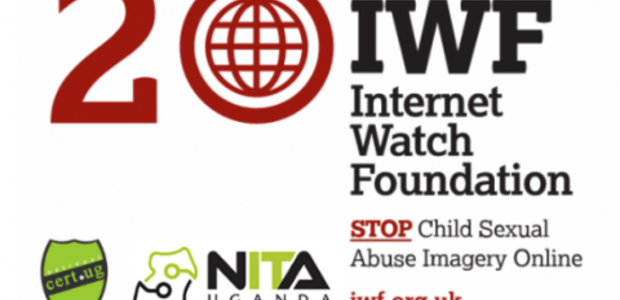advertisement
Uganda helps the IWF mark 20 years of fighting online child sexual abuse imagery
The National Information Technology Authority – Uganda ( NITA-U) and Uganda’s National Computer Emergency Response Team (CERT.UG) joined forces with…

The National Information Technology Authority – Uganda ( NITA-U) and Uganda’s National Computer Emergency Response Team (CERT.UG) joined forces with the IWF (Internet Watch Foundation) in the global battle to remove online of child sexual abuse imagery.
Uganda Reporting Portal was established in September, 2015 to provide a quick and easy way for citizens to report online images and videos of child sexual abuse, to a safe and anonymous hotline.
WF CEO Susie Hargreaves OBE says: “What’s truly shocking is not always the numbers of reports to our hotline, but what is shown in those images and videos. Each and every one of those quarter of a million reports is the record of the sexual abuse of a child. These are real children. The majority are under 10-years-old. Some are younger than two.It’s great that Uganda has become part of our ground-breaking initiative, to share our work and provide a first class Reporting Portal to protect citizens. Child sexual abuse imagery is a global problem and we can only fight it with a truly global solution. Uganda is now part of our history and our solution.”
advertisement
The very first report made to the newly-formed IWF was at 11.21am on 21 October.
20 years later:
699,403 reports have been assessed by the IWF’s analysts, with,
advertisement
281,781* of those showing the sexual abuse of children. One report might show one, or thousands of images or videos of sexual abuse (October 1996 to September 30, 2016)
Only 0.2% of the world’s known child sexual abuse imagery is hosted in the UK today. That figure was 18% back in 1996 when the IWF was founded.
An infographic has been created charting the history of the charity, along with a film featuring leaders from top internet giants, and IWF Members: BT, Facebook, Google and Microsoft, and the parents of April Jones. April was a five-year-old British girl who was murdered by a man, within three hours of him looking at child sexual abuse imagery online.
advertisement
A selection of milestones:
11.21am on 21 October, 1996: The very first report was made to the newly formed IWF
1996: 18% of the world’s known child sexual abuse imagery was hosted in the UK
1996: 0.08 billion web users globally
1998: Google was founded
2004: Facebook was launched. IWF launched the URL list; a URL can contain one or 1000 images or videos
2005: One billion web users globally
2006: The Child Exploitation and Online Protection (CEOP) Centre, a specialist police body, was founded
2007: Apple launch the iPhone
2010: WhatsApp and Instagram were launched
2012: April Jones, five, and Tia Sharp, 12, were murdered. It emerged that their murderers had been viewing images and videos of child sexual abuse. There was a public outcry
2013: Google pledged £1 million to the work of IWF to recruit five new analysts
2014: The first global WeProtect summit was held in the UK. The Prime Minister David Cameron gave the IWF the right to actively search for images of child sexual abuse
2014: IWF launched its first overseas reporting portal in Mauritius
2015: One billion people used Facebook in a single day
2015: National Information Technology Authority – Uganda launches the Uganda Reporting Portal
2016: 3.4 billion web users
2016: IWF revealed it identified in one year 68,092 webpages of child sexual abuse imagery. That’s an increase of 417% over two years
2016: 0.2% of the world’s known child sexual abuse imagery is hosted in the UK.
IWF Reporting Portals have already been successfully established in Mauritius, Uganda, Akrotiri and Dhekelia, Anguilla, Ascension Islands, Bermuda, British Virgin Islands (BVI), Cayman Islands, Gibraltar, Montserrat ,Pitcairn Islands, Tristan Da Cunha, Turks and Caicos, St Helena and most recently, India.